The Frappuccino, a trademarked line of blended coffee beverages sold by Starbucks, has become more than just a drink; it’s a cultural icon, synonymous with modern coffee culture and lifestyle. The story of the Frappuccino begins in the early 1990s, a period marked by coffee innovation and experimentation. The drink owes its origins to a combination of creative baristas, consumer demand for colder, sweeter coffee options, and Starbucks’ strategic business decisions.
Brief History of the Frappuccino
The Frappuccino was born out of the desire to offer a cold, blended drink that could capture the burgeoning market for iced coffee products. It was initially developed by The Coffee Connection, a Boston-based coffee chain that Starbucks acquired in 1994. The original Frappuccino combined coffee, milk, ice, and flavored syrup, blended together to create a smooth, semi-frozen drink. Following the acquisition, Starbucks modified the recipe, branded it, and rolled it out across its stores in 1995. The drink was an instant success, significantly contributing to the company’s growth and popularity.
This innovation did not just meet the existing demand but spurred a new coffee culture, one that embraced customization, seasonality, and the coffee shop as a social space. The introduction of the Frappuccino marked a shift in how consumers engaged with coffee, moving beyond traditional hot beverages to more diverse and dessert-like options.
Overview of Its Popularity and Cultural Significance
The popularity of the Frappuccino can be attributed to several factors, including its customizable nature, which allows customers to tailor their drinks to their exact preferences, and its appeal to a wide demographic, including those who might not typically enjoy traditional coffee. Seasonal flavors and limited-time offerings have further boosted its appeal, creating anticipation and excitement around new releases.
The Frappuccino has also made a significant impact on social media, where it has been featured in countless posts, photos, and videos. Its visually appealing presentation, combined with the novelty of new flavors, has made it a favorite subject for influencers and everyday consumers alike, further embedding it into popular culture.
Moreover, the Frappuccino has influenced the broader coffee industry, inspiring a range of similar beverages across other coffee chains and cafes. It has become a benchmark for cold, blended coffee drinks, pushing innovation and experimentation in the industry.
In essence, the Frappuccino is more than just a beverage; it’s a phenomenon that reflects broader trends in consumer behavior, lifestyle, and social interaction. Its enduring popularity and cultural significance underscore Starbucks’ role in shaping modern coffee culture and the ways in which a simple drink can become a symbol of a particular time and ethos.
What is a Frappuccino?
A Frappuccino is a trademarked line of iced, blended coffee drinks offered by Starbucks, made from coffee or a crème base, ice, and various flavorings, and often topped with whipped cream. It comes in a wide array of flavor variations, catering to different taste preferences, including non-coffee options for those who prefer caffeine-free beverages. The drink enjoys global popularity, particularly as a refreshing choice during warmer months, though it is consumed by enthusiasts year-round.
What is a Frappuccino?
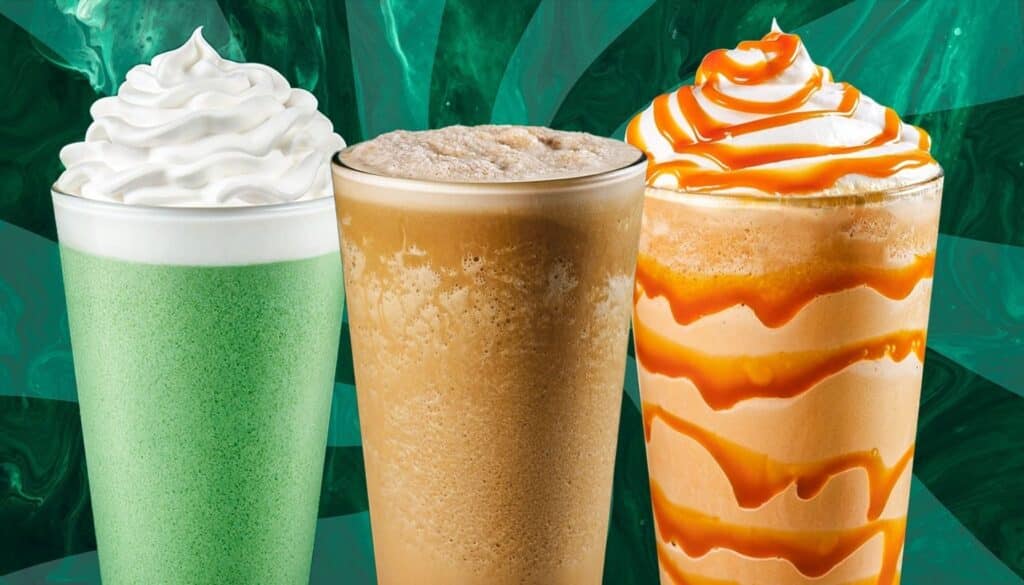
A Frappuccino is a trademarked line of blended iced coffee drinks sold by Starbucks, combining coffee or crème base with various additional ingredients such as flavored syrups, milk, and ice, all topped with whipped cream and sauces or sprinkles. It’s a staple of Starbucks’ menu, celebrated for its versatility and wide appeal. The Frappuccino has evolved to include a vast array of flavors and customizations, catering to a broad spectrum of taste preferences and dietary requirements.
Definition and Key Characteristics
- Base Composition: At its core, a Frappuccino consists of a coffee or crème base. The coffee base is made with brewed coffee, while the crème base is a non-coffee option that offers a similarly creamy texture without the caffeine.
- Texture: The hallmark of a Frappuccino is its thick, smooth texture, achieved by blending ice with the base ingredients until reaching a semi-frozen consistency. This texture differentiates it from other iced beverages, which are typically not blended.
- Customization: One of the defining features of the Frappuccino is its highly customizable nature. Customers can choose from various syrups, milks (including non-dairy alternatives), and add-ins like java chips or fruit purees to create their perfect drink.
- Toppings: Typically, Frappuccinos are finished with a generous dollop of whipped cream and additional toppings that vary depending on the flavor, such as caramel drizzle, chocolate sprinkles, or cinnamon powder.
Comparison with Other Coffee Beverages
- Iced Coffee: Unlike iced coffee, which is simply coffee served over ice, a Frappuccino is blended with ice, giving it a distinctively smooth, slush-like consistency. Iced coffee is also less customizable in terms of texture and typically focuses on the coffee flavor itself, with minimal additions.
- Iced Latte: An iced latte consists of espresso mixed with cold milk and served over ice. The main difference from a Frappuccino is the absence of blending and the more pronounced espresso flavor in an iced latte, as opposed to the Frappuccino’s sweeter, more dessert-like quality.
- Cold Brew: Cold brew coffee is made by steeping coffee grounds in cold water for an extended period, resulting in a smooth, rich coffee that is served cold. Unlike the Frappuccino, cold brew does not include blended ice or the same level of sweetness and flavor customization.
- Smoothies: While smoothies can share a similar texture to Frappuccinos, especially the crème-based varieties, they typically focus on fruit and other non-coffee ingredients. Frappuccinos are distinct for their coffee foundation and dessert-like appeal.
The Frappuccino stands out in the coffee beverage landscape for its unique blend of coffee culture and dessert-like indulgence, offering a customizable, refreshing option that caters to a wide range of tastes and dietary preferences. Its versatility and the sensory experience it provides—combining taste, texture, and visual appeal—have cemented its place as a beloved choice among coffee enthusiasts and casual drinkers alike.
The Birth of the Frappuccino
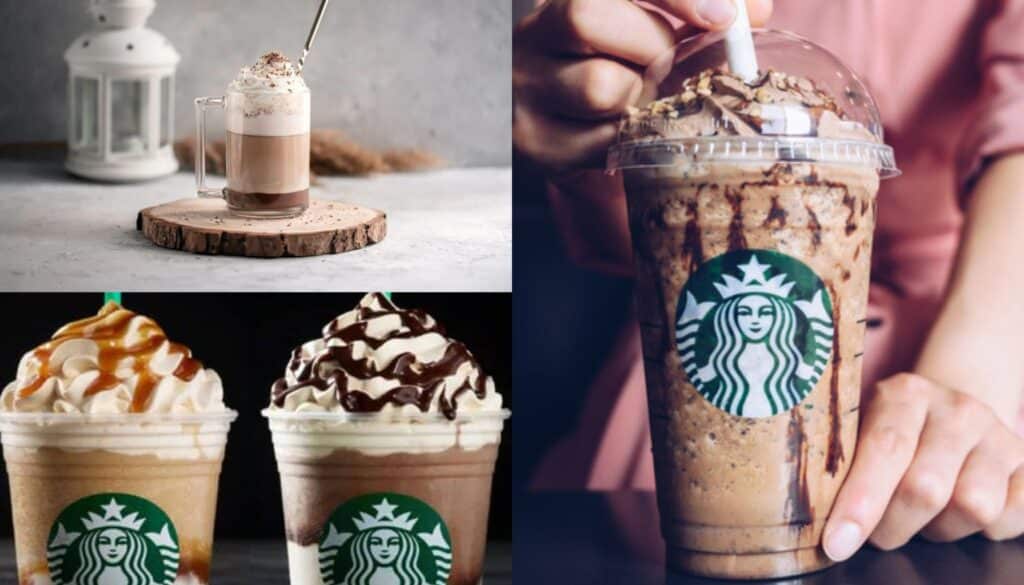
The Frappuccino’s journey from a novel idea to a global phenomenon is a tale of innovation, strategic marketing, and an understanding of consumer desires. Its origins and development highlight how Starbucks transformed a simple blended drink into an emblematic product that resonates with millions around the world.
Origins and Development at Starbucks
The story of the Frappuccino begins before Starbucks became the coffee giant it is today. The original concept for a blended coffee drink was not born within Starbucks but rather acquired through its purchase of The Coffee Connection, a small Boston-based chain, in 1994. The Coffee Connection had a drink called the “Frappuccino,” which combined iced coffee, milk, sugar, and flavored syrup, blended together to create a frothy, refreshing beverage. Recognizing the potential of this unique offering, Starbucks acquired the rights to the Frappuccino name and recipe as part of the acquisition deal.
Starbucks then set out to refine and market the Frappuccino to fit its brand and appeal to a broader audience. The company experimented with different recipes, eventually settling on a formula that included a proprietary coffee blend designed specifically for the Frappuccino. This blend was combined with milk, ice, and various syrups for flavoring, creating a drink that was not only refreshing but also visually appealing and customizable.
How It Became a Global Phenomenon
The launch of the Frappuccino in the summer of 1995 marked a pivotal moment in Starbucks’ history. Its immediate popularity provided a significant boost to the company’s sales and brand visibility, especially during the typically slower warm weather months. The success of the Frappuccino also underscored the public’s growing interest in specialty coffee beverages and flavored drinks, a trend that Starbucks was poised to capitalize on.
Several key factors contributed to the Frappuccino’s rise to global fame:
- Marketing and Branding: Starbucks’ marketing strategy played a crucial role in promoting the Frappuccino. The company leveraged its store locations, partnerships, and advertising to build a strong brand image around the drink, associating it with a lifestyle of sophistication, relaxation, and enjoyment.
- Innovation and Expansion: Starbucks continuously expanded the Frappuccino line with new flavors, limited-time offerings, and even non-dairy versions to cater to evolving consumer tastes and dietary preferences. This innovation kept the product line fresh and exciting, encouraging repeat visits and social media buzz.
- Global Expansion: As Starbucks expanded internationally, the Frappuccino became a key offering in its global menu, adapted in some cases to suit local tastes and preferences. Its universal appeal helped establish Starbucks as a global coffee culture ambassador, making the Frappuccino a symbol of modern coffee culture worldwide.
The Frappuccino’s success is not just a testament to Starbucks’ business acumen but also reflects changing consumer behaviors and the growing acceptance of coffee as an indulgent, customizable experience. From its humble origins to its status as a cultural icon, the Frappuccino has become synonymous with the Starbucks brand, embodying the company’s commitment to innovation, quality, and customer satisfaction.
Key Ingredients and Varieties
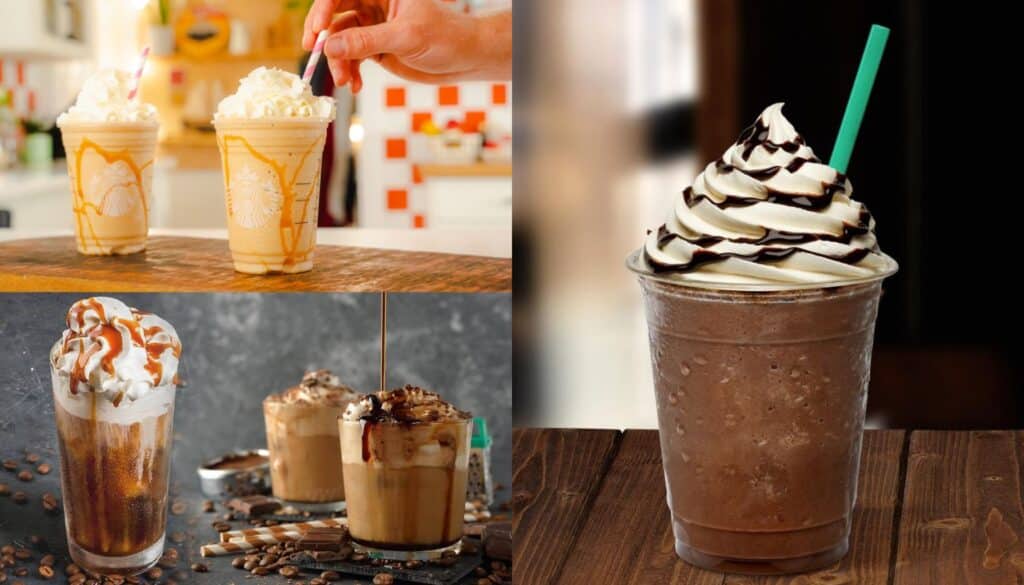
The Frappuccino, Starbucks’ signature blended beverage, is known for its rich variety and customizable options, catering to a wide array of taste preferences and dietary needs. Understanding its key ingredients and the plethora of flavors available can help appreciate the versatility and appeal of this popular drink.
Base Ingredients Common to Most Frappuccinos
At its core, a Frappuccino consists of several base components:
- Coffee or Crème Base: The foundation of a Frappuccino is either a coffee base, made with a special blend of brewed coffee, or a crème base, which is a non-coffee option for those who prefer their drinks without caffeine.
- Milk: Traditional Frappuccinos are made with whole milk, but Starbucks offers a variety of milk options, including non-dairy alternatives like soy, almond, coconut, and oat milk, to accommodate different dietary preferences.
- Ice: Crushed ice is blended with the other ingredients to create the Frappuccino’s signature smooth, icy texture.
- Sweetener: Classic syrup or other flavored syrups are added to sweeten the drink, balancing the bitterness of the coffee.
- Whipped Cream: Most Frappuccinos are topped with whipped cream, adding a rich, creamy finish to the drink, although it can be omitted upon request.
Discussion of Different Flavors and Seasonal Offerings
Classic Flavors
- Mocha: Combines coffee with mocha sauce, milk, and ice, topped with whipped cream and a mocha drizzle, offering a perfect balance of coffee and chocolate.
- Caramel: Features a blend of coffee, milk, and ice, mixed with caramel syrup, and finished with whipped cream and a caramel drizzle for a sweet, buttery flavor.
- Vanilla Bean: Part of the crème Frappuccino line, this variant blends milk, ice, and vanilla bean powder, topped with whipped cream, offering a rich vanilla flavor without coffee.
Seasonal and Limited-Edition Varieties
Starbucks frequently introduces seasonal and limited-edition Frappuccinos, often aligned with holidays or seasons, which have included flavors like:
- Pumpkin Spice: A fall favorite, blending coffee with pumpkin, cinnamon, nutmeg, and clove flavors, topped with whipped cream and pumpkin pie spices.
- Peppermint Mocha: A winter holiday treat, combining mocha and peppermint flavors with coffee, milk, and ice, adorned with whipped cream and dark chocolate curls.
- S’mores: A summer special, capturing the essence of s’mores with marshmallow-infused whipped cream, milk chocolate sauce, a blend of coffee, milk, and ice, finished with more whipped cream and a graham cracker crumble.
Customization Options for Personal Preferences
Starbucks’ Frappuccinos are highly customizable, allowing customers to tailor their drinks to their exact liking:
- Milk Alternatives: Choose from whole, 2%, nonfat, and non-dairy milks.
- Syrups and Sauces: Add or substitute syrups and sauces for different flavors.
- Caffeine Level: Adjust the caffeine content by adding or reducing the coffee base or opting for the crème base.
- Add-ins: Customize with add-ins like java chips, fruit purees, or protein powder.
- Toppings: Opt for extra whipped cream, sprinkles, or drizzles for a personalized finish.
This level of customization, combined with a diverse range of flavors and seasonal offerings, ensures that there’s a Frappuccino for every taste and occasion, contributing to the enduring popularity of this iconic Starbucks beverage.
How a Frappuccino is Made
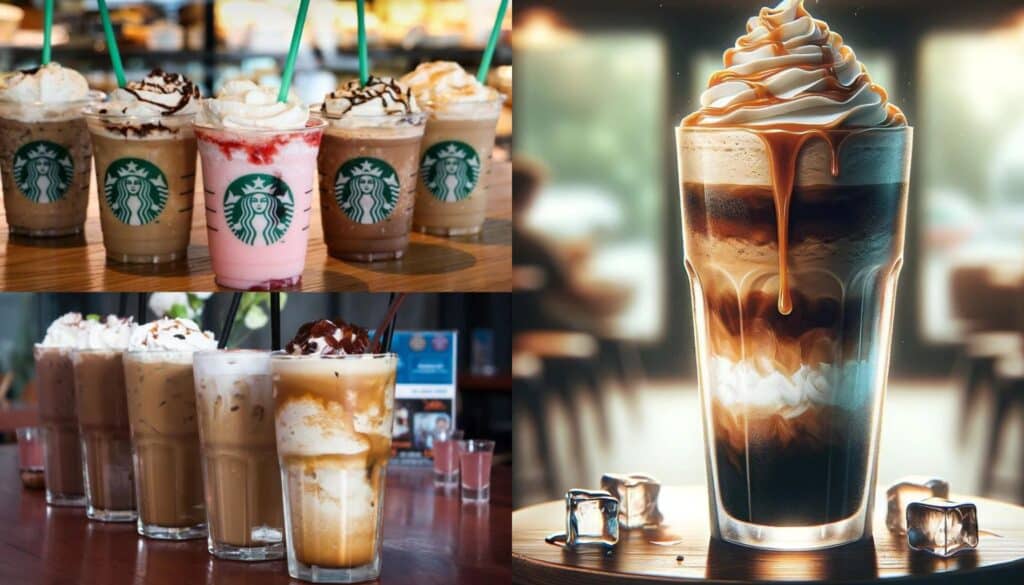
Creating a classic Frappuccino involves a blend of coffee, milk, ice, and flavorings, resulting in a creamy, indulgent treat. Here’s how you can replicate the process, both in a Starbucks setting and in the comfort of your own home.
Equipment and Ingredients Needed
For a Starbucks-like Experience:
- Blender: A high-powered blender is essential for achieving the smooth, icy texture characteristic of a Frappuccino.
- Espresso Machine or Coffee Brewer: For brewing the coffee needed as the base.
- Measuring Cup: To accurately measure the ingredients.
- Ice: Essential for the trademark cold, slushy texture.
- Coffee or Espresso: The base of the drink. Starbucks uses a specially formulated Frappuccino Roast, but any strong brewed coffee or espresso will work.
- Milk: Any kind, including non-dairy alternatives.
- Flavored Syrup: Such as vanilla, caramel, or mocha, depending on your preferred flavor.
- Whipped Cream: For topping.
- Cup and Straw: For serving.
DIY Tips for Making a Frappuccino at Home:
- Brew the Coffee: Start with strong brewed coffee or espresso. If you’re using regular coffee, make it stronger than usual to ensure the coffee flavor stands out after blending with ice and milk.
- Cool the Coffee: Allow the coffee to cool to room temperature, or chill it in the refrigerator to prevent the ice from melting too quickly during blending.
- Gather Ingredients: Measure out the milk, flavored syrup (homemade or store-bought), and ice. The quantities can be adjusted based on your taste preferences and the size of the drink you’re making.
Step-by-Step Process of Making a Classic Frappuccino
- Blend the Base: In a blender, combine about 1 cup of ice, ½ cup of your cooled coffee or espresso, and ½ cup of milk. For a flavored Frappuccino, add 2-3 tablespoons of your chosen syrup, like vanilla, caramel, or chocolate.
- Adjust Texture: Blend the mixture until smooth. If the mixture is too liquidy, add more ice until you achieve the desired slushy consistency. If it’s too thick, add a bit more milk or coffee.
- Customize Your Drink: At this point, you can add any extras, like chocolate chips, a scoop of ice cream, or flavored extracts to customize your Frappuccino further.
- Serve: Pour the blended mixture into a glass. Top with whipped cream and any additional toppings like a drizzle of caramel, chocolate sauce, or sprinkles.
- Enjoy: Insert a straw, serve immediately, and enjoy your homemade Frappuccino!
Additional Tips for the Perfect Homemade Frappuccino
- Experiment with Flavors: Beyond the classic flavors, feel free to experiment with other syrups, spices, or extracts to create your own unique Frappuccino blends.
- Make It Healthy: For a lighter version, opt for skim or plant-based milk, skip the whipped cream, and use sugar-free syrups or natural sweeteners.
- Consistency Is Key: The texture of your Frappuccino should be smooth and thick enough to be sipped through a straw. Adjust the ice and liquid ratios as needed to achieve the perfect consistency.
Making a Frappuccino at home allows for endless creativity and personalization, letting you enjoy your favorite coffee treat anytime, tailored exactly to your tastes.
Nutritional Information
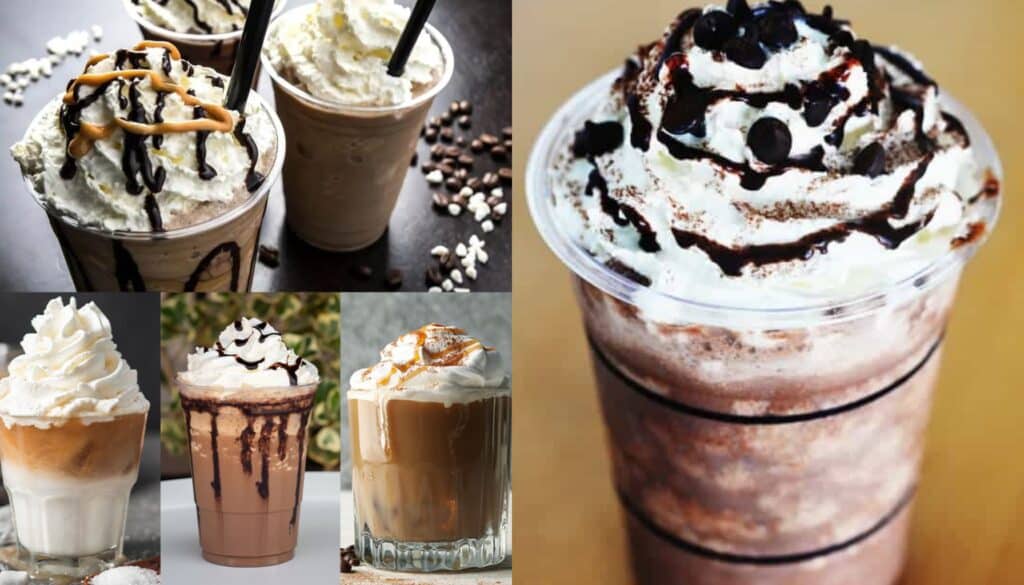
The nutritional content of a Frappuccino can vary widely based on the specific ingredients and customization options chosen. These beverages can range from relatively modest in calories and sugar to quite indulgent, depending on the size, type of milk, flavorings, and toppings included. Here’s a general overview, some comparisons between different sizes and flavors, and tips for making healthier choices.
Overview of Caloric Content and Nutritional Considerations
A standard Frappuccino from Starbucks, especially those with whipped cream and syrups, can be high in calories, sugar, and fat. For example, a Grande (16 oz) Mocha Frappuccino with whole milk and whipped cream can contain around 410 calories, 15 grams of fat, and 61 grams of sugar. The nutritional content increases with size and additional flavorings or toppings.
Comparison Between Different Sizes and Flavors
- Sizes: Starbucks Frappuccinos are typically available in Tall (12 oz), Grande (16 oz), and Venti (24 oz) sizes. Moving from a Tall to a Venti can significantly increase the caloric intake. For instance, a Tall Vanilla Bean Crème Frappuccino contains approximately 280 calories, while its Venti counterpart can contain upwards of 490 calories.
- Flavors: The type of Frappuccino also impacts its nutritional profile. Classic flavors like Mocha, Caramel, and Vanilla are on the higher end of the calorie spectrum due to their syrup content. In contrast, lighter options such as the Coffee Frappuccino without whipped cream are lower in calories and fat.
- Milk Choice: The choice of milk affects the drink’s calorie and fat content. Whole milk contributes to a creamier texture and higher calorie count, whereas non-dairy alternatives like almond or coconut milk can lower these numbers.
Tips for Making Healthier Choices
- Opt for Smaller Sizes: Choosing a Tall over a Grande or Venti can significantly reduce calorie intake.
- Select Non-Dairy Milk: Non-dairy milks typically have fewer calories and less fat than whole milk. Skim milk is also a lower-calorie dairy option.
- Skip the Whipped Cream: Omitting whipped cream can save around 50-110 calories and 5-11 grams of fat per drink.
- Reduce Syrup Pumps: Decreasing the number of syrup pumps or opting for sugar-free syrups can significantly cut down sugar and calorie content.
- Customize Wisely: Additions like java chips, caramel drizzle, or mocha sauce increase calories and sugar. Being mindful of these add-ons can help maintain a healthier profile.
- Choose Light or Blended Options: Starbucks offers “Light” versions of some Frappuccinos, which are made with non-fat milk and without whipped cream, reducing the calorie content by at least 33% compared to their regular counterparts.
Being informed about the nutritional content of your favorite Frappuccino and understanding how different customizations impact its healthfulness can help you make choices that align with your dietary goals. Whether it’s by modifying the milk, size, or additional components, you can enjoy this popular beverage in a way that suits your lifestyle.
The Frappuccino Culture
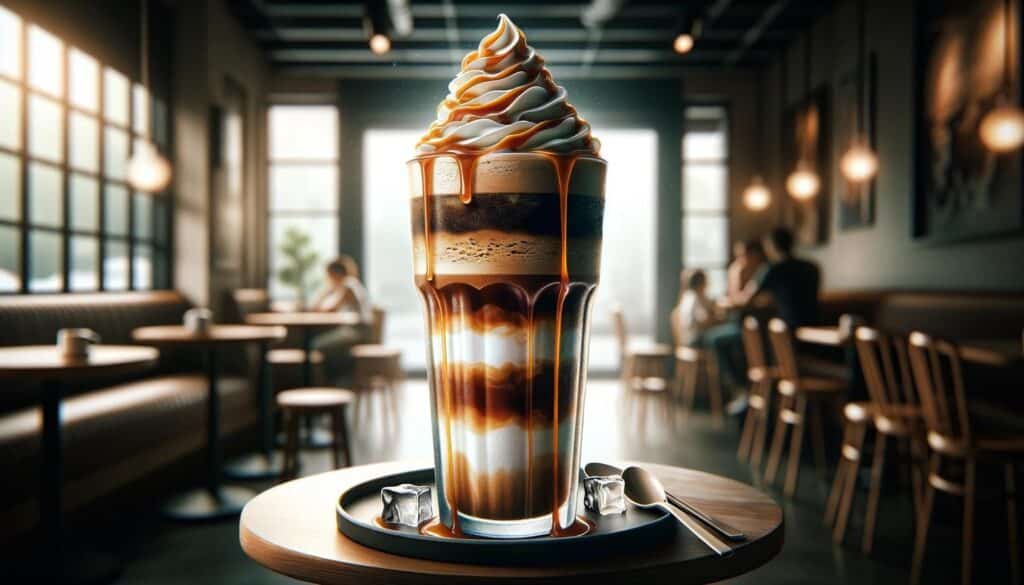
The Frappuccino has not only become a staple on the Starbucks menu but has also woven itself into the fabric of modern coffee culture and social behavior. Its introduction marked a shift in how consumers perceive and consume coffee, transforming it from a mere morning pick-me-up into a customizable, social, and even indulgent experience. The impact on coffee culture, consumer behavior, and its role in social media and popular culture showcase the Frappuccino’s unique position in the coffee industry.
Impact on Coffee Culture and Consumer Behavior
Democratization of Specialty Coffee: The Frappuccino played a significant role in democratizing specialty coffee, making it accessible and appealing to a broader audience. It introduced a playful, experimental approach to coffee that encouraged consumers to explore beyond traditional black coffee and espresso drinks.
Customization and Personalization: Starbucks’ emphasis on customization with the Frappuccino catered to individual tastes and preferences, empowering customers to be part of the creation process. This level of personalization has become expected in the coffee shop experience, influencing how other cafes and chains approach their menu offerings.
Seasonality and Limited Editions: The introduction of seasonal and limited-edition Frappuccinos created a sense of anticipation and exclusivity among consumers. This strategy not only drives sales but also fosters a deeper emotional connection between the brand and its customers, as they look forward to their favorite seasonal offerings each year.
Role in Social Media and Popular Culture
Visual Appeal: The aesthetic appeal of Frappuccinos, with their colorful layers and toppings, has made them particularly popular on social media platforms. Instagram, Facebook, and Twitter are awash with images of these beverages, showcasing their role as not just drinks but also as accessories that reflect one’s identity and lifestyle.
Viral Sensations: Some Frappuccinos have become viral sensations, like the Unicorn Frappuccino, which sparked widespread media coverage and social media buzz. These moments highlight how Frappuccinos can transcend the realm of coffee to become cultural phenomena.
Influencer Collaborations: Starbucks has leveraged collaborations with influencers and celebrities to promote new Frappuccino flavors, further embedding the beverage in popular culture and reaching younger demographics in particular.
Testimonials and Stories from Frappuccino Enthusiasts
Community and Connection: Many Frappuccino enthusiasts share stories about how their favorite drinks are tied to specific memories or experiences, such as studying for college exams, first dates, or as a treat during family outings. This emotional connection underscores the role of Frappuccinos in fostering community and connection.
Creative Expression: For some, customizing their Frappuccino is a form of creative expression, experimenting with flavors and toppings to create something unique. The sharing of these custom creations on social media not only inspires others but also creates a shared sense of discovery and innovation among fans.
Global Reach: The Frappuccino culture is not limited to the United States; it has a global reach, with fans around the world sharing their love for the drink. This global community of enthusiasts showcases the universal appeal of the Frappuccino, transcending cultural and geographical boundaries.
The Frappuccino culture is a testament to the drink’s impact on coffee consumption, social habits, and its ability to adapt and evolve with changing consumer tastes and societal trends. It has become more than just a beverage; it’s a cultural icon that continues to shape and reflect the modern coffee experience.
Beyond Starbucks: Frappuccino-Inspired Beverages
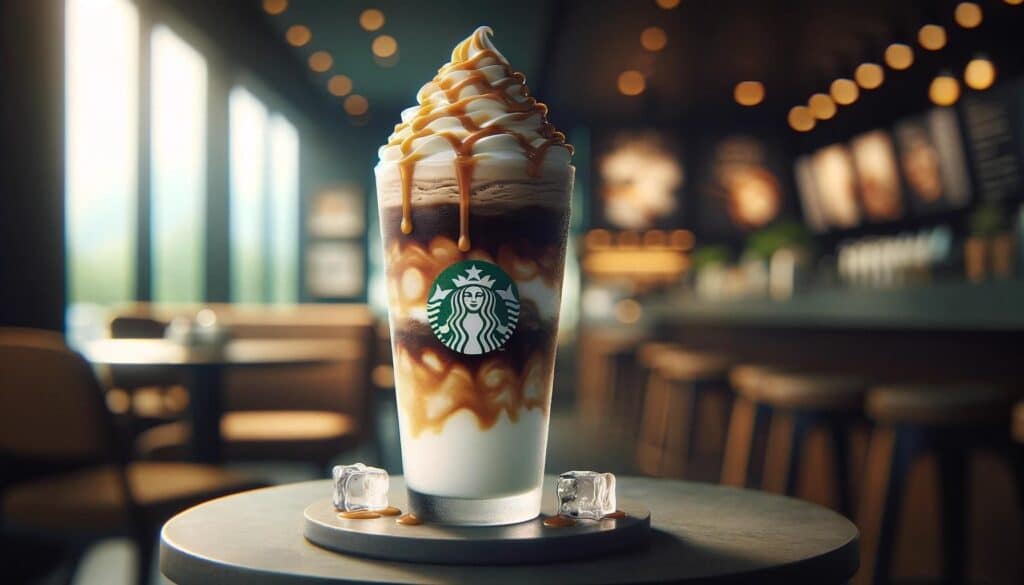
The success of the Starbucks Frappuccino has inspired a multitude of coffee shops and brands to create their own versions of the blended ice coffee drink, leading to a vibrant landscape of Frappuccino-inspired beverages. These offerings vary in ingredients, branding, and flavor profiles, reflecting the adaptability of the concept to different tastes and market demands. Here’s how other brands have put their spin on this popular drink and a comparison with the original Starbucks Frappuccinos.
Frappuccino-Inspired Beverages Beyond Starbucks
Independent Coffee Shops: Many independent coffee shops have introduced their versions of blended ice coffee drinks, often emphasizing local ingredients, artisanal approaches, and customizable options. These versions might focus on organic or single-origin coffee, homemade syrups, and alternative milk options, distinguishing themselves from the mass-market appeal of Starbucks.
Fast Food and Chain Restaurants: Fast food giants and chain restaurants have also jumped on the bandwagon, offering their takes on the iced blended coffee drink. For example, McDonald’s introduced the Frappe, available in flavors like Mocha and Caramel, as part of its McCafé line. These alternatives are often marketed as more affordable options compared to Starbucks, appealing to cost-conscious consumers.
Retail and Ready-to-Drink Offerings: The popularity of Frappuccino-style drinks has extended into the retail market, with various brands offering ready-to-drink versions available in supermarkets and convenience stores. These products aim to capture the convenience and flavor of a Frappuccino for those on the go, with variations that range from coffee-forward to dessert-like flavors.
Comparison with Starbucks Frappuccinos
Flavor Diversity: Starbucks Frappuccinos are known for their wide range of flavors, including seasonal and limited-edition offerings that create buzz and anticipation. Competitors often have a more limited selection but might offer unique flavors that reflect local tastes or specific brand identities.
Customization: One of the hallmarks of the Starbucks experience is the ability to customize drinks extensively. While some competitors offer customizable options, the level of personalization at Starbucks is hard to match, given its vast syrup selection, milk alternatives, and add-ins.
Price Point: Competitors often position their Frappuccino-inspired beverages as more affordable alternatives to Starbucks. While the price difference can be a draw for some consumers, Starbucks loyalists might argue that the brand’s emphasis on quality and the experience justifies the premium.
Quality and Ingredients: Starbucks uses a proprietary coffee blend and has made efforts to source ethically and sustainably. Independent coffee shops might emphasize local sourcing and artisanal ingredients as their competitive edge. In contrast, fast food chains and retail products may focus on consistency and convenience over artisanal qualities.
Brand Experience: For many, the appeal of a Starbucks Frappuccino goes beyond the drink itself to include the brand experience, including the café environment, loyalty programs, and seasonal promotions. Competitors differentiate themselves through their unique brand propositions, whether it’s the convenience of a fast-food setting, the local charm of an independent café, or the home comfort of a retail product.
While Starbucks may have popularized the Frappuccino, the concept of a blended ice coffee drink has been embraced and adapted by a wide range of competitors, each offering their unique take on the beverage. This diversification enriches the coffee culture, providing consumers with a broad spectrum of choices to suit their preferences, whether they prioritize flavor innovation, affordability, convenience, or the quality of ingredients.
The Future of Frappuccinos

The future of Frappuccinos appears poised for continued innovation and adaptation, reflecting evolving consumer preferences, technological advancements, and a growing emphasis on sustainability. Starbucks, as the creator of the Frappuccino, leads this evolution, constantly exploring new flavors, ingredients, and practices to stay at the forefront of the beverage industry. Here’s a glimpse into the potential future of Frappuccinos, focusing on innovations, trends, and Starbucks’ sustainability initiatives.
Innovations and Trends in Frappuccino Development
Health-Conscious Options: As consumers become increasingly health-conscious, there’s a growing demand for beverages that are lower in sugar and calories, include functional ingredients, or cater to specific dietary needs. Future Frappuccinos may feature sugar substitutes, alternative proteins, superfood ingredients, and expanded non-dairy milk options to attract health-conscious consumers.
Sustainability-Focused Ingredients: The trend towards sustainability is prompting Starbucks to explore more eco-friendly ingredients. This could include coffee sourced from regenerative farming practices, organic syrups and flavorings, and locally sourced ingredients that reduce the carbon footprint.
Technological Innovations: Advances in technology could lead to novel ways of creating and customizing Frappuccinos. For instance, app-based customization could become even more detailed, allowing customers to adjust the texture, temperature, and mix of ingredients in their drinks with precision.
Global Flavor Inspirations: Starbucks has always drawn inspiration from global cuisines for its seasonal offerings. This trend is likely to continue, with future Frappuccinos incorporating flavors from around the world, offering customers a taste of international cultures and traditions.
Starbucks’ Initiatives for Sustainability and New Flavors
Sustainable Packaging: Starbucks has made commitments towards reducing waste and promoting sustainability. Future initiatives could include further development of reusable and recyclable cups specifically designed for Frappuccinos, alongside incentives for customers to choose environmentally friendly options.
Ethically Sourced Ingredients: Starbucks continues to emphasize ethical sourcing practices for its coffee and other ingredients. This commitment is likely to shape the development of new Frappuccinos, with a focus on transparency, fair trade practices, and supporting farmers and communities.
Reducing Carbon Footprint: Starbucks has set ambitious goals to reduce its carbon footprint, water use, and waste. Future Frappuccinos might be crafted with these goals in mind, utilizing ingredients and processes that are more efficient and less resource-intensive.
Plant-Based Innovations: With the rise of veganism and plant-based diets, Starbucks is likely to expand its range of plant-based Frappuccinos. This could include not just alternative milks but also plant-based whipped creams and flavorings.
Limited-Edition Collaborations: Collaborations with celebrities, artists, and brands have become a popular strategy for creating buzz. Future Frappuccinos could feature limited-edition flavors and designs resulting from such partnerships, blending culinary creativity with pop culture.
As Starbucks continues to innovate and adapt to changing consumer tastes and values, the future of Frappuccinos looks both exciting and sustainable. By balancing the demand for new, diverse flavors with a commitment to health, sustainability, and ethical practices, Starbucks is set to keep the Frappuccino at the heart of coffee culture for years to come.
Conclusion
The Frappuccino, since its inception, has significantly influenced coffee culture and consumer preferences, establishing itself as more than just a beverage; it’s a cultural phenomenon that resonates with millions worldwide. Its impact on coffee culture and its enduring appeal can be attributed to several key factors, from innovation and customization to its role in social media and sustainability efforts. Here’s a recap of the Frappuccino’s journey and its lasting legacy.
Impact on Coffee Culture
Innovation and Adaptability: The Frappuccino introduced a novel way of enjoying coffee, blending the traditional with the innovative. Its success paved the way for a broader acceptance and expectation of flavored and iced coffee beverages, expanding the coffee market beyond the conventional hot drinks.
Customization: Central to the Frappuccino’s appeal is its highly customizable nature. Starbucks capitalized on this, offering an array of syrups, milks, and toppings, allowing consumers to tailor their drinks to their precise tastes. This level of personalization has become a hallmark of modern coffee culture, setting new standards for the industry.
Seasonality and Limited Editions: The introduction of seasonal and limited-edition Frappuccinos has created a sense of anticipation and excitement around the brand, demonstrating how coffee can be both a comfort and a celebration. These offerings have helped to keep the menu fresh and engaging, encouraging repeat visits and social sharing.
Role in Social Media and Popular Culture
The Frappuccino has thrived in the age of social media, with its visual appeal and novelty flavors making it a favorite subject for influencers, celebrities, and everyday consumers. Its presence on platforms like Instagram and Twitter has not only boosted its popularity but also cemented its status as a symbol of contemporary lifestyle and trends.
Sustainability and Future Directions
As consumer values shift towards sustainability and health, Starbucks has adapted its Frappuccino offerings to align with these concerns. Initiatives in sustainable sourcing, packaging, and the introduction of plant-based options reflect Starbucks’ commitment to innovation and environmental responsibility, ensuring the Frappuccino remains relevant and appealing to new generations of coffee lovers.
The Enduring Appeal of the Frappuccino
The Frappuccino’s enduring appeal lies in its ability to evolve while maintaining its core identity as a customizable, indulgent treat. It bridges the gap between traditional coffee culture and modern consumer desires, offering a unique experience that is both familiar and exciting. Its impact extends beyond the beverage itself, influencing coffee consumption habits, inspiring competitors, and contributing to the global coffee culture.
In conclusion, the Frappuccino stands as a testament to Starbucks’ innovative spirit and its understanding of consumer trends. As it continues to adapt to changing tastes and values, the Frappuccino remains a beloved icon in the world of coffee, symbolizing creativity, community, and the joy of discovery. Its legacy is not just in the flavors and experiences it offers but in its contribution to the evolution of coffee culture around the globe.
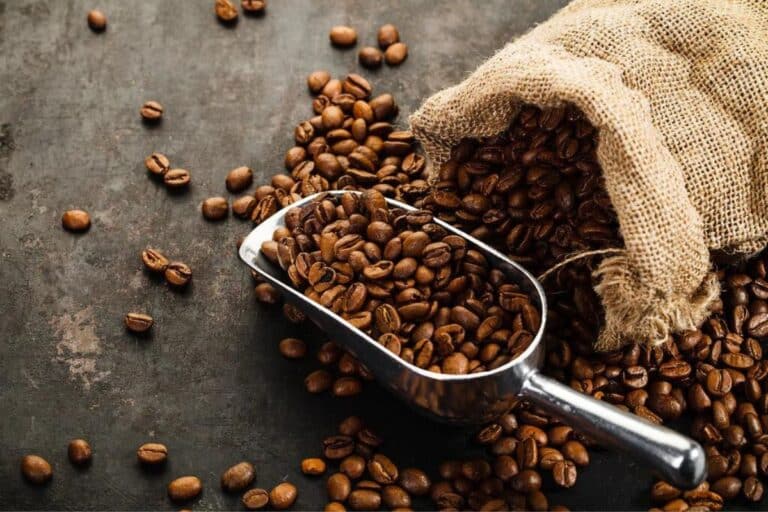






1 thought on “What is a Frappuccino?”
The detailed explanation of the Frappuccino’s origins and evolution really highlights why it’s become such an iconic part of coffee culture. I loved learning about how its customization and seasonal offerings have made it a favorite for so many people worldwide. The comparison with other beverages and the insights into its role in social media and sustainability efforts make it clear just how much thought goes into this one drink. It’s fascinating to see how something so simple has grown into a global phenomenon!